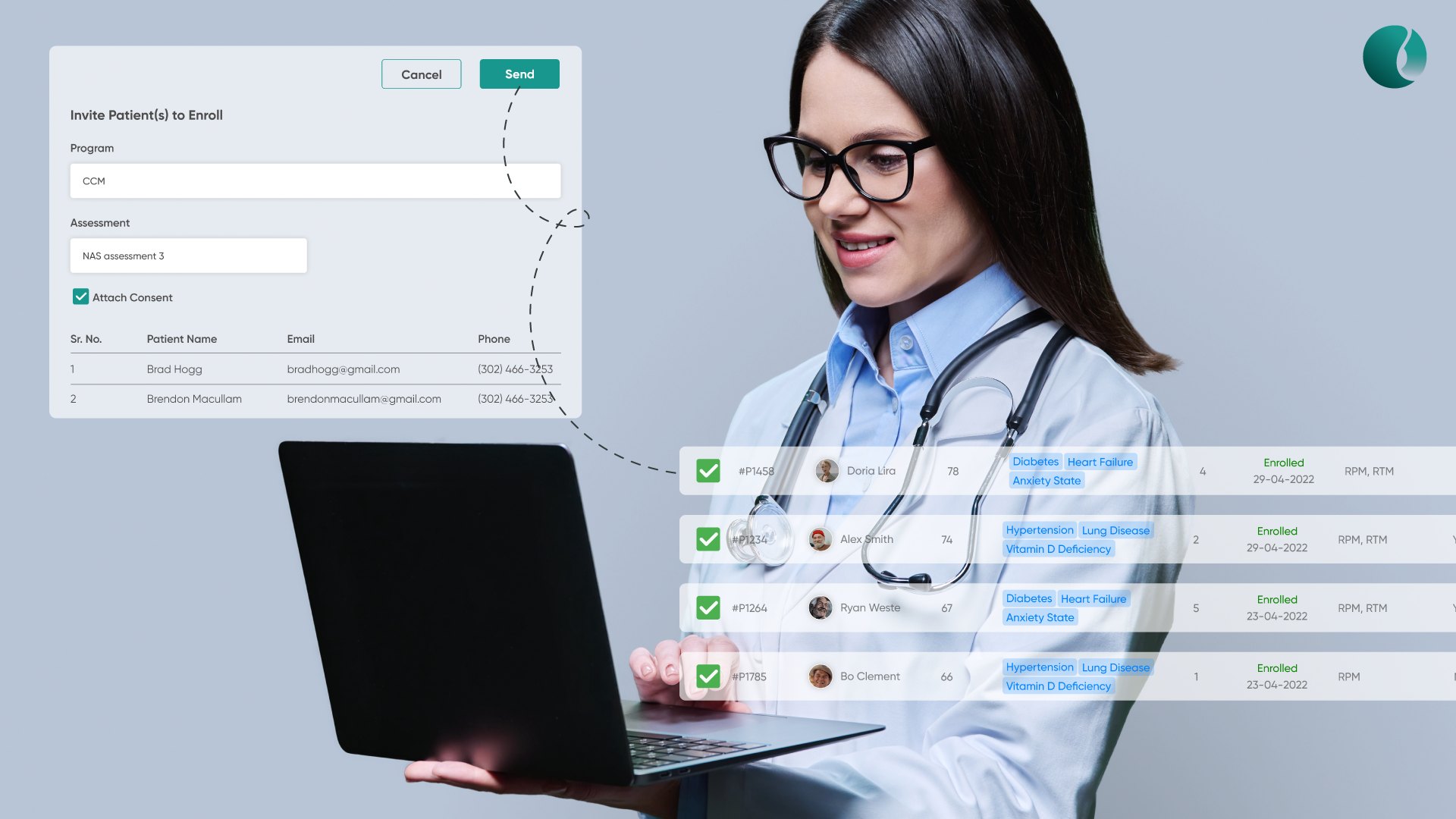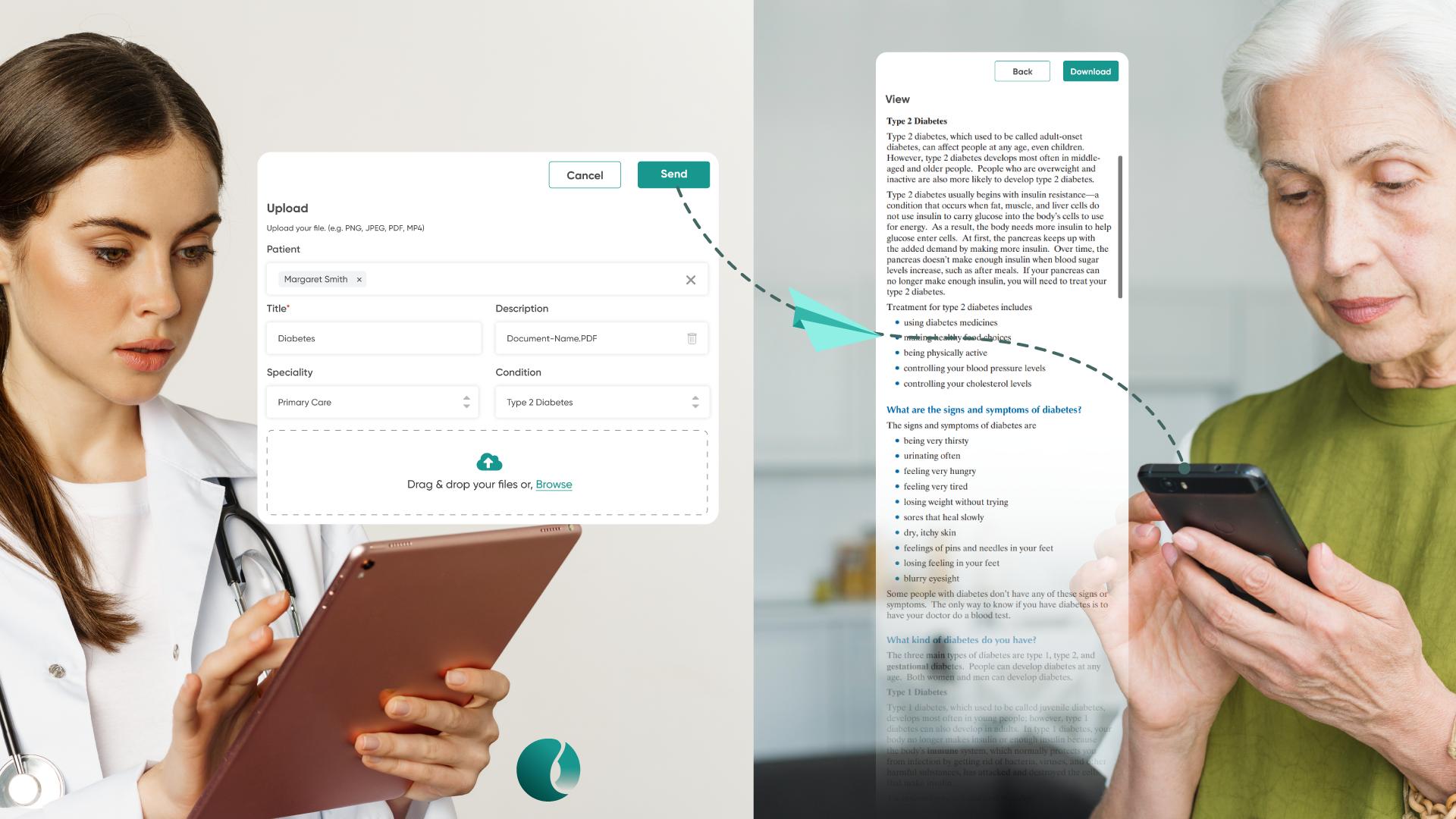Client Background
The client is a prominent healthcare provider based in Maryland who operates a clinic to manage patients with cardiovascular diseases. The client has vast medical experience and passion, which gained popularity in the nearby region.
Business challenges
The client has recently implemented the chronic care management program in their practice and started delivering care to patients using reputed CCM software. While delivering care to patients using the software, the client has identified some challenges, which are as follows:
1. Challenges in care coordination among care providers
Chronic care management treatment requires various specialists and care providers to perform various clinical activities to obtain expected patient health outcomes. The client’s existing CCM software lacks communication functionalities, so care providers were unable to communicate regarding patient health and clinical outcomes. This fragmented healthcare delivery affected patient health outcomes.
2. Personalized care delivery challenges
It is crucial to understand and address the specific needs of patients to manage their chronic conditions and obtain the expected patient health outcomes. The client’s existing CCM software has ready-made inbuilt care plans that can’t be customized/configured by the care providers. This lack of customization feasibility has missed the essential care needs of patients.
3. Consumption of time in manual administrative activities
While handling a large patient population, it is important that the software allows for automated tasks and restricts care providers from spending more time on administrative activities. The client’s existing software lacks the functionalities of bulk patient creation, bulk invites for enrollment, etc. These activities need to be performed manually, which requires more time and reduces practice efficiency.
4. Lack of patient participation
Due to the prolonged duration of chronic care management, it becomes difficult for the client to keep the patients engaged throughout the program. Lack of patient engagement directly affects patient health outcomes.
Solution
The client identified fragmented care coordination as the root cause of affected patient health outcomes. Hence, the client approached Medarch Inc. for eCareMD software that promotes effective care coordination. Our team has conducted multiple requirement-gathering sessions with clients to understand the exact requirements and business challenges. After receiving final approval from the client, our team implemented the eCareMD software into the client’s practice. After the implementation of the software, the client experienced improved patient health outcomes and satisfaction rates.
Solution Highlights
With the use of advanced technological features, the eCareMD software has prominent care coordination capabilities to streamline the practice workflow and improve the quality of care delivery.
Some of the key features that addressed the client’s business challenges include:
1. Seamless communication channels
The eCareMD software facilitates secure video/voice calling and text messaging functionality that fosters seamless communication between various care providers, such as doctors, nurses, specialists, and patients. This increased communication between care providers related to patient health treatment helps them make prompt decisions about patient health. This coordinated care delivery resulted in improved patient health outcomes.
2. Systematic care plan management
To ensure each specific need of a patient's health should be addressed, the eCareMD software enables care providers to customize and assign the care plan as per the patient's health requirements. It includes goals, barriers, interventions, medications, expected outcomes, etc. The care providers can assign new care plans to patients, update them, and take monthly care plan reviews, among others. Also, the care providers can evaluate the care plan's progress, and the physician reviews the care plan and sends the care plan report to the patient.
To enhance the accuracy and efficiency of care plan assignment, the eCareMD software includes 150+ care plans in the library, which automatically suggests during the care plan assignment as per the chronic condition of the patient.
3. Automated administrative activities

The intention was to reduce manual work and improve the care provider’s efficiency and time spent delivering care to the patient. The eCareMD software enabled care providers to create bulk patients by uploading the CSV file. It also allows care providers to send consent to bulk patients for enrollment. These activities required little manual work and resulted in significant time savings.
4. Patient empowerment

Patient engagement is vital to obtaining the expected health outcomes for patients. The eCareMD software enabled care providers to send educational material to patients that educated them about the benefits of following treatment adherence, medication schedules, and lifestyle recommendations.
Patients can access these educational materials through the patient portal, where they can access and attend their scheduled appointments, care plan reports, medication reminders, etc. Also, patients can communicate with care providers over video calls, voice calls, and secure messaging.
It resulted in increased patient awareness about their chronic condition as well as engagement with treatment plans.
Value Delivered
1. Enhanced communication and collaboration
Using eCareMD’s secure communication channels, patient-provider communication has been increased. This improved communication and collaboration has resulted in improved patient health outcomes.
2. Improved care plan management
With the automated care plan suggestion, configuration of care plan as per patient-specific needs, and monthly care plan review features, the care plan management has been improved, and ultimately, it leads to improved patient health outcomes.
3. Streamlined Workflow and Efficiency
Features like bulk patient creation and bulk invite reduced manual activities, helping streamline the practice workflow and improving the care provider’s efficiency.
4. Improved Patient Engagement
Secure communication channels like video/voice calls, messaging, educational material functionality, and customizable reminders for medication and appointments helped engage patients with the treatment plan, which resulted in improved patient health outcomes.

